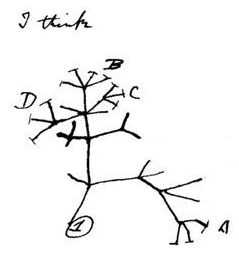
Current Phylogenetics Projects
Phylogenomics of Pleuroceridae
Snails in the family Plueroceridae are found in springs, creeks, and rivers across the United States, east of the Rocy Mountains. We published the first robust phylogenetic hypothesis for Pleuroceridae in 2022. However, the 2022 study focused primarily on generating a backbone phylogeny for the species. As such, much more work is needed to understand the systematics of Pleuroceridae. We have several ongoing projects that aim to further clarify pleuroceird relationships so genus and species taxonomy can be revised in a robust evolutionary framework.
Phylogenetics and Biodiversity of freshwater mussels
Freshwater mussels have received much more research attention than freshwater snails, but the systematics of some mussel groups are still poorly understood. We are currently studying Anodontini mussels with an emphasis on species from the Uwharrie Mountains region in North Carolina. The Uwharrie Mountains are one of the oldest geological formations in the United States, and our work has uncovered multiple instances of undescribed diversity. We are working on resolving relationships among Alasmidonta species and related genera so new species can be accurately classified. This work is critical for effective conservation of freshwater mussels as conservation plans cannot be designed if species are not known to science.
Past Projects
Phylogenetics and speices boundaries of Juga
Juga is a genus of freshwater snails found from Northern Washington to Northern California. These snails are in the family Semisulcospiridae, which is the sister family to Pleurocerida. Juga includes wide ranging riverine species and narrow range endemics only found in one or two springs. Some of these species are undescribed and often referred to with an informal system of common names. This complicates efforts to effectively conserve Juga biodiversity. The first component of this research was elucidating relaionships within the genus , which was published in Molecular Phylogenetics and Evoltution. We also published a full taxonomic revision of the genus, which was published in European Journal of Taxonomy.
Deep Relationships of Invertebrates
We are broadly interested in deep invertebrate relationships and the methods used to infer them. Much of my past work has focused on inferring relationships among ctenophores and determing their placement on the animal tree of life. We do not currently have any active projects on deep relationships of invertebrates, but the lab is generally interested in understanding how different phylogenetic methods and models perform at deep and shallow evolutionary timescales.